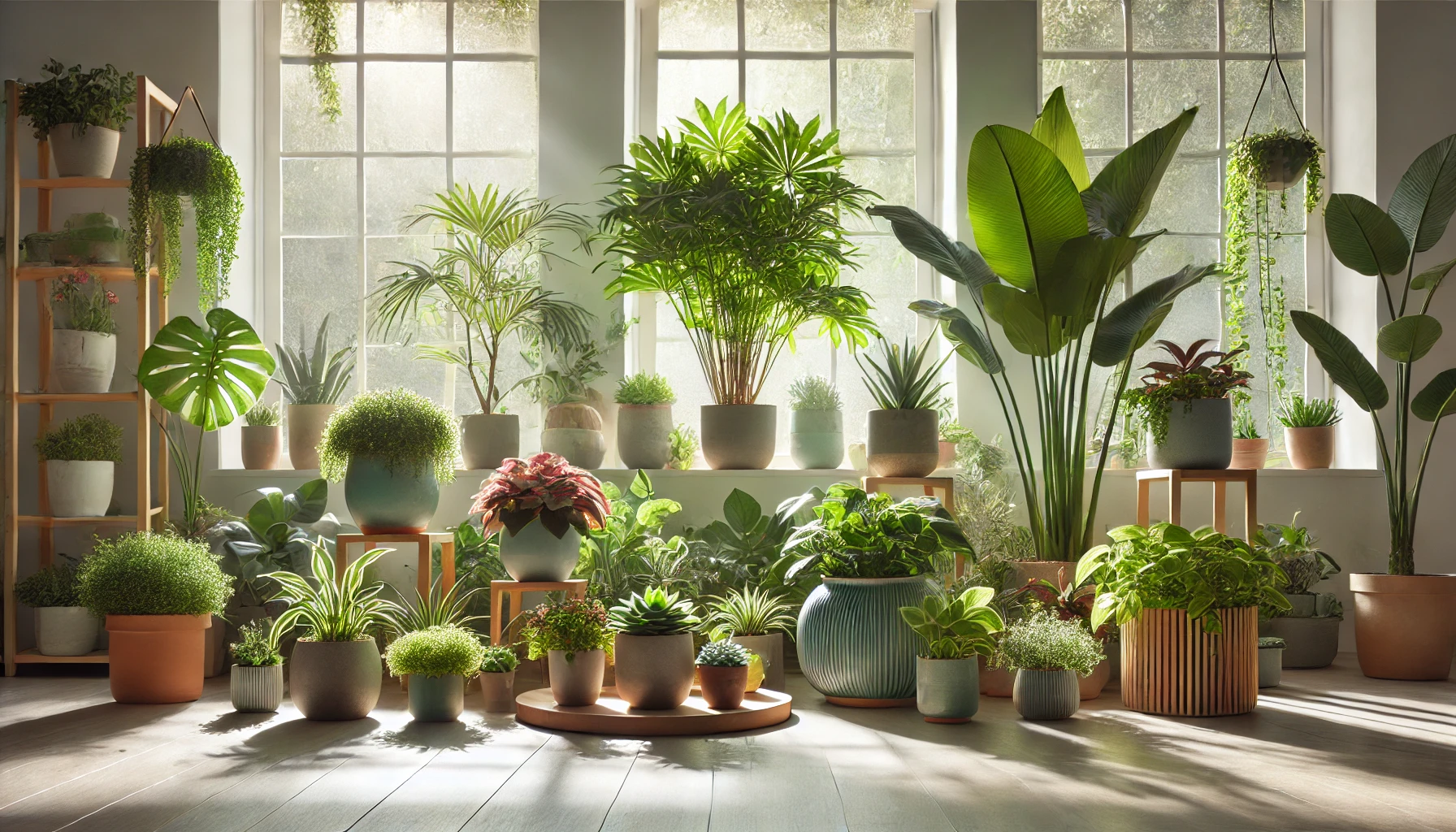Plants do more than just beautify your home—they can also help reduce noise by absorbing sound waves and minimizing echoes. Whether you live in a bustling city or simply want a quieter indoor space, strategically placed plants can create a more serene environment. This guide explores how to use plants for noise reduction effectively.
How Plants Help Reduce Noise
- Sound Absorption
- Leaves, stems, and branches absorb sound waves, reducing ambient noise.
- Blocking Noise
- Dense foliage acts as a barrier, muffling sounds.
- Minimizing Echoes
- Plants add texture to a room, disrupting sound waves and reducing reverberation.
Best Plants for Noise Reduction
1. Areca Palm (Dypsis lutescens)
- Why It’s Great: Large, dense fronds are excellent for absorbing sound.
- Care Tips: Thrives in bright, indirect light and needs consistent watering.
2. Rubber Plant (Ficus elastica)
- Why It’s Great: Thick, broad leaves are ideal for dampening noise.
- Care Tips: Prefers bright, indirect light and minimal watering.
3. Monstera Deliciosa
- Why It’s Great: Its large, split leaves effectively block and absorb sound.
- Care Tips: Loves bright, indirect light and moderate watering.
4. Boston Fern (Nephrolepis exaltata)
- Why It’s Great: Thick, bushy foliage helps absorb high-frequency sounds.
- Care Tips: Needs high humidity and indirect light.
5. Peace Lily (Spathiphyllum)
- Why It’s Great: Compact yet dense, making it great for small spaces with echoes.
- Care Tips: Thrives in low to medium light and consistently moist soil.
Tips for Using Plants to Reduce Noise
1. Place Plants Strategically
- Position plants near windows, doors, or walls where noise enters the room.
- Use multiple plants to create a natural barrier in open spaces.
2. Group Plants Together
- Clustering plants amplifies their sound-absorbing properties.
- Combine plants of different sizes and densities for maximum effect.
3. Incorporate Vertical Elements
- Use tall plants or green walls to block noise in larger rooms.
- Hanging plants can help in areas with limited floor space.
4. Choose the Right Pots
- Heavy pots reduce vibrations and stabilize larger plants.
- Fabric pots can further contribute to sound absorption.
Other Tips for a Quieter Home
- Combine Plants with Other Solutions: Use rugs, curtains, and soft furnishings alongside plants for enhanced noise reduction.
- Opt for Larger Plants: Bigger plants with dense foliage are more effective at absorbing sound.
- Monitor Plant Health: Healthy plants perform better, so ensure they receive proper care.
Conclusion: Quiet Elegance with Greenery
Using plants to reduce noise is an eco-friendly and visually appealing way to create a peaceful home. By selecting the right plants and placing them strategically, you can enjoy a quieter, more serene living environment while adding natural beauty to your space.





